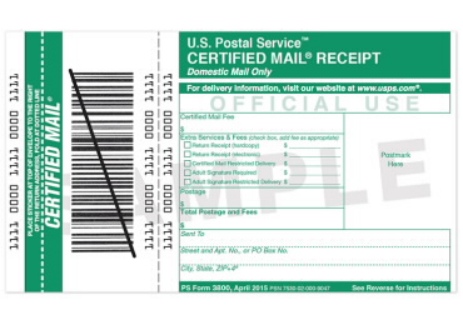
This article is part of a larger series on Investing in Real Estate.
TABLE OF CONTENTSA cash for keys agreement allows landlords to quickly and efficiently remove unwanted tenants without going through the eviction process. To complete the standard process of this agreement, landlords must make a cash offer, inspect the property, and sign a written agreement to release the tenants. This saves time and money while ensuring quick access to the property. Success depends on effective communication and approach with the tenant.
A downloadable cash for keys agreement template is available below to use and modify according to your needs.
FILE TO DOWNLOAD OR INTEGRATE
Get Our Free Cash for Keys Agreement
Download as PDF
💡Quick tip:
Avail, a top property management platform, equips landlords with rent analysis reports, revealing local market trends and comparable properties. Its online payment system incentivizes timely tenant payments, reducing the need for cash for keys agreements.
Select Download TypeHow does cash for keys work? The process of a cash for keys agreement is not as straightforward as signing the contract and receiving the keys. It is a voluntary agreement between a landlord and tenant where the landlord offers cash to the tenant in exchange for the tenant’s property keys.
Though performed outside the legal system, it requires a written document where both parties agree to the terms of the transaction. This arrangement benefits both parties, as the tenant receives funds for moving while the landlord repossesses the property promptly. It is typically used in rental properties, but can also be used by lenders and banks during foreclosure.

Exchange of cash for keys (Source: Adobe Stock)
With this agreement in place, the eviction process (in which landlords must cover court costs, spend time in housing court, and pay rental costs left uncovered by tenants) can be avoided. This option is voluntary for both parties, does not involve the legal system, and does not affect the tenant’s credit score.
If you want a comparison between a cash for key transaction and an eviction, read through our article How to Evict a Tenant, which gives you a free eviction checklist.
However, a landlord might want access to their properties through a cash exchange for other scenarios. A cash for keys for renters may be implemented in the following circumstances:
This process is legal in all 50 states as long as landlords offer the agreement in a non-threatening and voluntary manner. Always consult state laws to ensure compliance, especially regarding security deposits and deductions for rent, damages, or repairs.
Before deciding whether this agreement is your best option, it’s important to think through the advantages and disadvantages of this exchange. While it can be a quick and easy way to regain access to your rental property, it also can be an added expense, and tenants may refuse to enter into the agreement. Here are the pros and cons to consider before moving forward:
| PROS | CONS |
|---|---|
| Faster possession time of property | Tenants can refuse the offer |
| Can help current tenants with cash flow | Other tenants may get wind of the practice and might want to exploit it |
| Promotes better tenant screening process | It’s an expense that perhaps wasn't anticipated |
| Could save landlord costs, even with back rent owed | Negotiations of agreement can be drawn out |
| Eliminates length of eviction’s legal process | Can get into legal trouble if found to have bribed tenants instead of incentivizing them |
| You can still get an ROI if the cash offer is reasonable | Tenants may insist on an unreasonable amount of money |
Prior to sending an eviction notice, try discussing the situation with your tenant in person or via phone. They may catch up on rent or leave voluntarily without a formal agreement. However, if tenants are uncooperative or avoid conversation with you, proceed with the eviction process by serving them a written eviction notice. Follow state laws for serving the notice. Certified mail or assistance from a sheriff or process server may be required. If using mail, track delivery with a return receipt to ensure it reaches someone at the property.

Sample mail receipt (Source: USPS)
After receiving the eviction notice, some tenants may be willing to discuss further. Follow up with a phone call and propose a cash for keys agreement, emphasizing its advantages. Highlight that eviction can harm their future housing prospects and credit score, while this agreement offers monetary compensation.
Pro tip: Landlords should screen tenants and verify income to minimize risk. Learn which verify a tenant’s proof of income, so you know what to request from a potential tenant during the rental application process.
If the tenant appears willing to consider this type of agreement, the next step is to decide how much to offer. For comparison, it may be useful to calculate the potential cost of eviction. Consider factors such as legal fees, lost rental income, court expenses, and property turnover expenses, which could amount to thousands of dollars. Once the cost of eviction is determined, offer less than that to reap the advantages of the agreement.
You can also assess comparable rents in your area to ensure your cash offer covers the first and last month’s rent, and possibly a security deposit for your leaving tenant. This incentive can encourage the tenant to surrender the keys for cash and move out promptly. Additionally, consider a reasonable move-out deadline and leverage it along with the cash offer for negotiation with the tenants.
Another key element to a successful cash for keys agreement is being highly specific about the terms of the agreement. When verbally presenting the offer to your tenants, be clear and firm about the following items:
Tenants may attempt to negotiate or present counteroffers. You may accept if reasonable but limit negotiations if the initial offer is fair. Straying too far from the proposed amount can make you appear vulnerable or potentially result in paying more than necessary. Avoid situations where tenants may attempt to extort additional money or time from you.
Before finalizing and presenting the agreement to your tenant, inspect the property to ensure it is in good condition. Difficult tenants may not take care of the property, so check for any major damage that could affect the agreement or the compensation offered.
Include all agreed-upon terms from your verbal conversation in the written agreement. Set a date to meet with the tenant for the final agreement signing and a final property inspection. Also, determine the date for the key exchange and cash payment. Both parties should sign two copies of the agreement for record keeping.
On the move-out date specified in the agreement, conduct a final walk-through of the property with the tenant present. If the property is broom-clean with no excessive damage, provide the cash payment and change the locks promptly. In case of damage, calculate the deduction from the cash payment or security deposit before releasing funds to the tenant.
Download our move-in and move-out checklist to assist with your final walk-through:
FILE TO DOWNLOAD OR INTEGRATE
Rental Move-in and Move-out Checklist